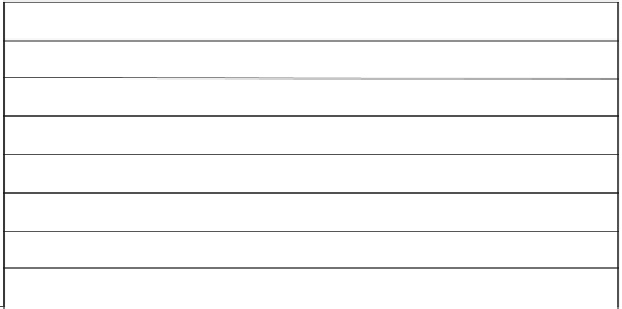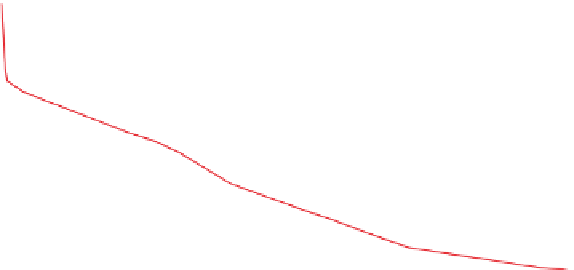Environmental Engineering Reference
In-Depth Information
80
70
B17(essay2)
B4-B6
60
50
40
30
20
10
0
0
2
4
6
8
10
12
14
16
18
20
22
24
Time (Days)
Fig. 6
Moisture reduction with two different grain size sediments
It is recorded that proctor optimum (water content at which soil may be used via a
reagent addition) is attained with a value inferior to 20 days, for a sediment layer
inferior to 40 cm. Beyond, packing down provoked by sediment seems to hinder
water from evacuating by gravity (formation of floating water on the surface).
To confirm the useful field of this technology, a comparative test was carried
out with two sediments of different grain sizes (sediment height: 5.5 cm).
Graphs in Fig.
6
have neighboring profiles until 12 days date, and water loss is
comparable until proctor optimum.
Conclusions and Prospects
Road draining sediment classification according to environmental and geotechnical
criteria have made it possible to grasp parameters determination, which is an
indispensable preliminary to improve engineering. This work has established that
the geotechnical properties of the studied material present some homogeneity and
that their aptitude for engineering improvements deserves to be analyzed case by case,
beginning with the most problematic parameters: grain size and water content.
It appears that simple treatment technologies are able to provide an adapted
answer to make studied materials suitable for engineering improving. Materials
environmental classification has, for the time being, only been interested in risk
concerning direct or indirect material ingestion (using VCI): studies in columns are
in progress to evaluate, from sediment composition, potential risks for contamination
of water resources by infiltration of water percolating via sediments. Treatment
possibilities concerning organic matter and hydrocarbons have been studied in 2007,
but the results are not conclusive: a second campaign will be renewed in 2008.














































